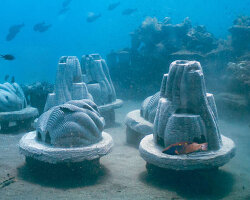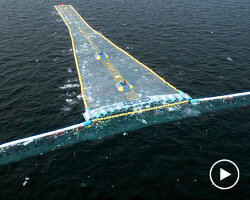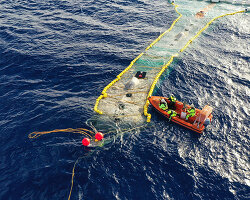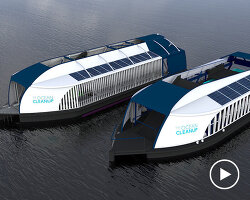for enviromental enthusiasts, boyan slat has become somewhat synonymous with the title ‘teen prodigy.’ back in 2012, the dutch engineering student first floated his concept for the ocean cleanup array—a boyant trash trap that uses natural currents from the pacific ocean to clean the garbage within it. come 2015, the then 21 year old won the 2015 INDEX: award for his design breakthrough. now, two more years down the line, slat has unveiled a new, improved design prototype for his system, announcing that the invention will start extracting platic from the great pacific garbage patch within the next 12 months. thanks to the improved design, the ocean cleanup—the brand behind the technology—has increased the efficiency of the system even further, allowing for the cleanup of a full half of the great pacific garbage patch in just 5 years. the first parts of the device are already in production, a full two years ahead schedule.
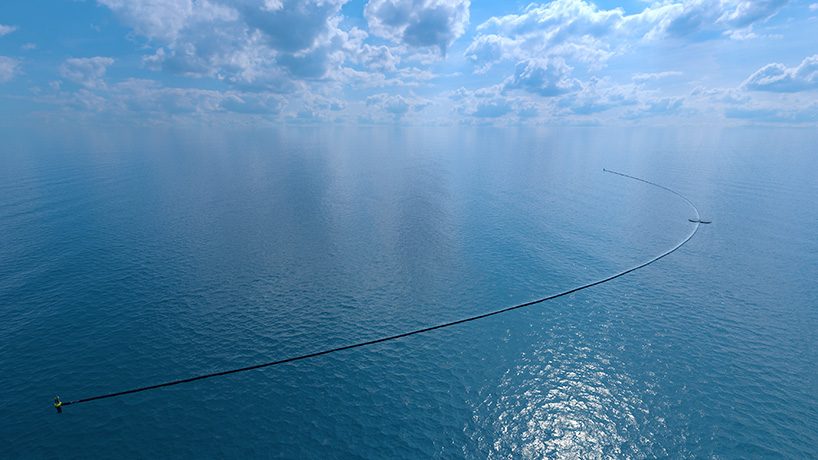
the ocean cleanup computer rendering, aerial side view
image courtesy of erwin zwart / the ocean cleanup
the essential idea behind the ocean cleanup project is to use the natural currents in the oceans to let them clean themselves. the technology consists of a curved network of long floating barriers that act like an artificial coastline, enabling the natural ocean currents to concentrate the plastic in a central point. from here, it can be extracted and shipped to shore for recycling. the same procedure—carried out with traditional methods such as vessels and nets—would take many thousands of years and billions of dollars to complete, so slat’s concept is essentially a breakthrough for a future of cleaner oceans.
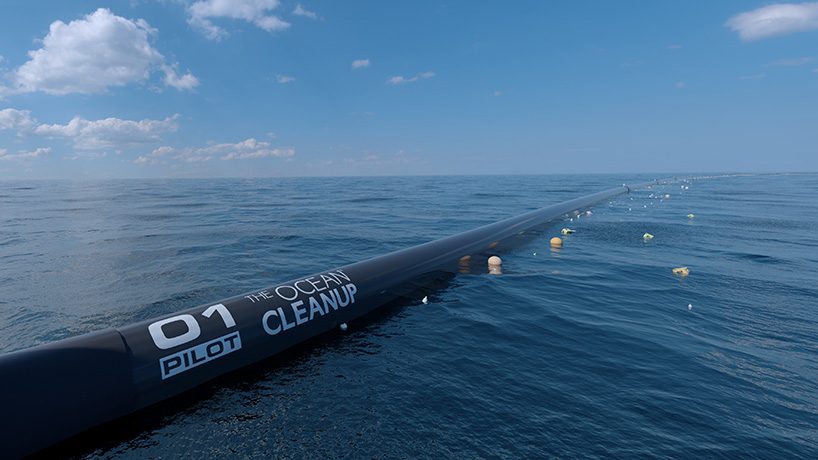
the ocean cleanup computer rendering, close-up
image courtesy of erwin zwart / the ocean cleanup
the latest advances in the ocean cleanup’s design involve the introduction of a drifting anchor system. so, instead of fixing the floating barriers to the seabed, the system will use anchors to ensure that the floating screens move slower than the plastic, meaning no trash can get away. instead of using just a singular barrier as suggested by the original design, the new system consists of a fleet of screens. using a ‘modular’ anchored system like this has rendered the production and deployment of the system much easier, meaning the ocean cleanup will start its mission two years ahead of schedule.
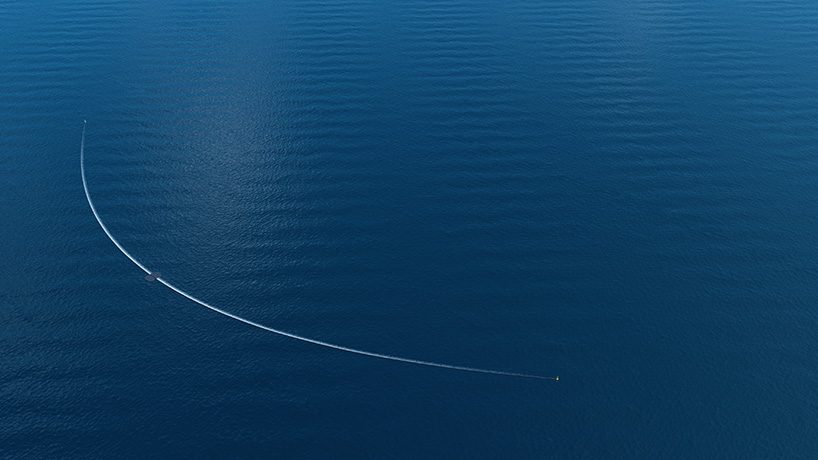
the ocean cleanup computer rendering, aerial view
image courtesy of erwin zwart / the ocean cleanup
speaking at the werkspoorkathedraal in utrecht, the netherlands, the ocean cleanup’s founder and CEO boyan slat demonstrated the new technology and unveiled the first parts of the cleanup system: four 12-meter (40-foot) high anchor components. ‘at the ocean cleanup we are always looking for ways to make the cleanup faster, better and cheaper,’ explained slat. ‘today is another important day in moving in that direction. the cleanup of the world’s oceans is just around the corner.’ he added that the large-scale trials of its cleanup technology in the pacific ocean later this year are still experimental in nature. ‘due to our attitude of “testing to learn” until the technology is proven, i am confident that – with our expert partners – we will succeed in our mission.’
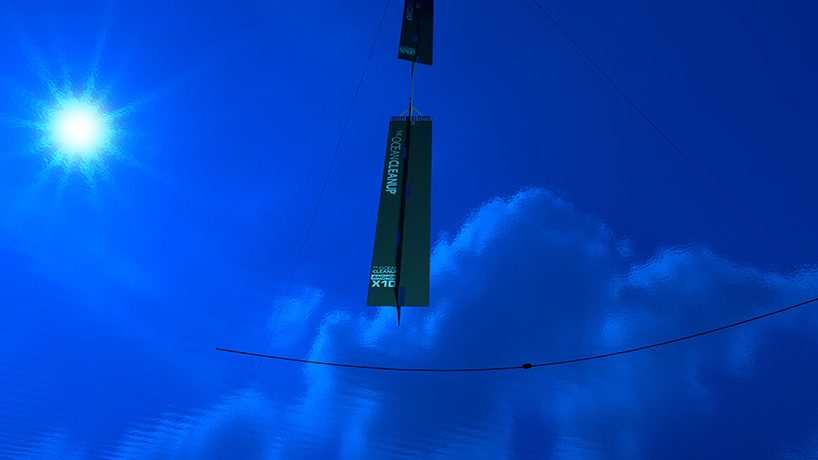
the ocean cleanup computer rendering, anchor close-up
image courtesy of erwin zwart / the ocean cleanup
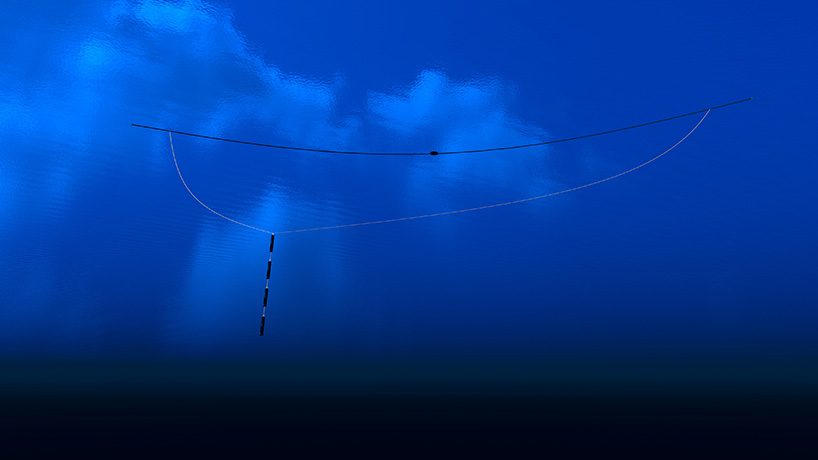
the ocean cleanup computer rendering, underwater view
image courtesy of erwin zwart / the ocean cleanup
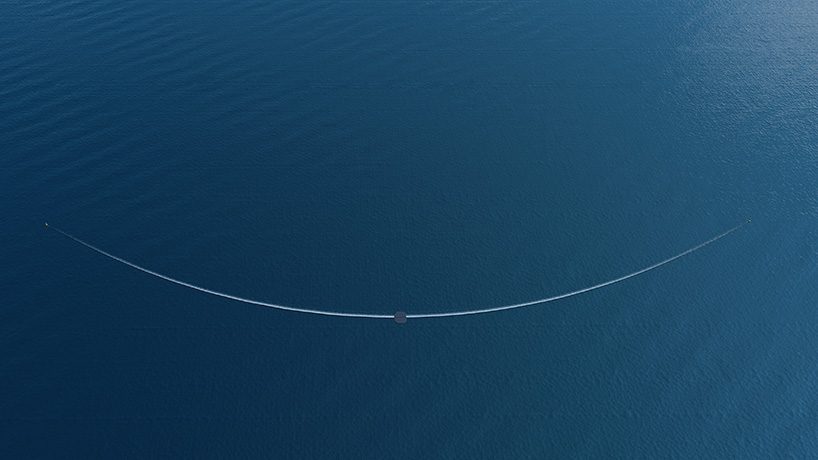
the ocean cleanup computer rendering, top view
image courtesy of erwin zwart / the ocean cleanup
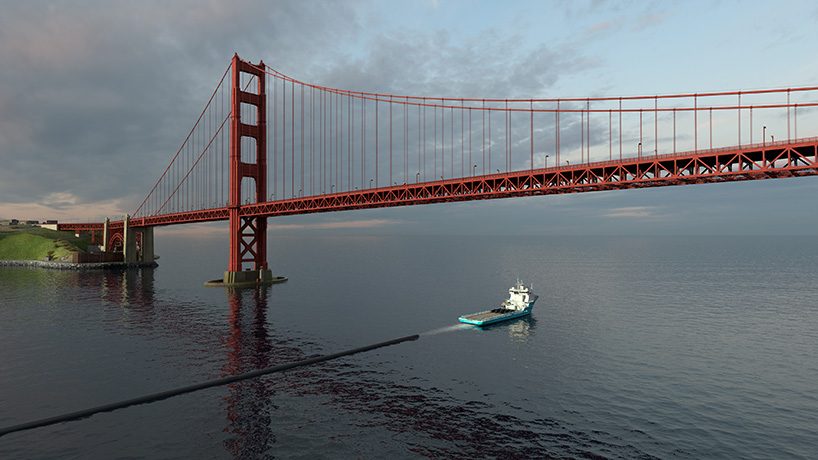
the ocean cleanup computer rendering, above-water view
image courtesy of erwin zwart / the ocean cleanup
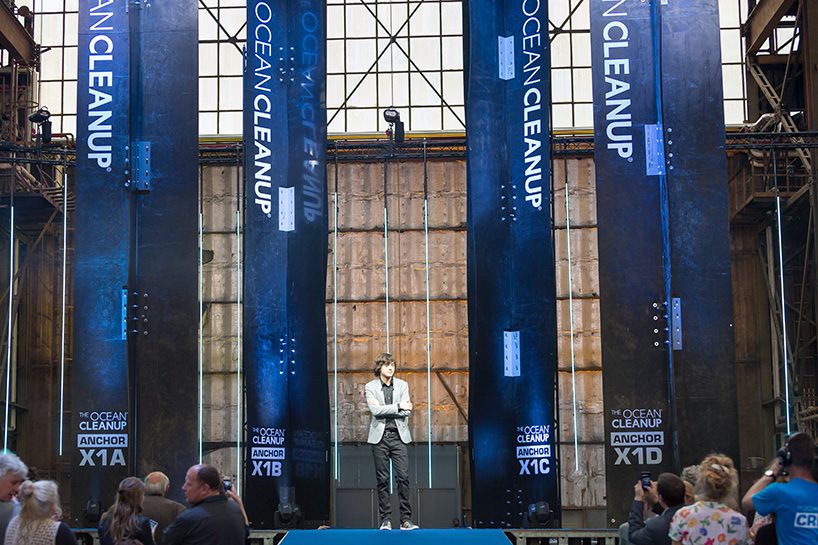
boyan slat announces the design breakthrough in ultrect
image courtesy of the ocean cleanup

trialing a prototype system in the north sea in 2016
image courtesy of the ocean cleanup
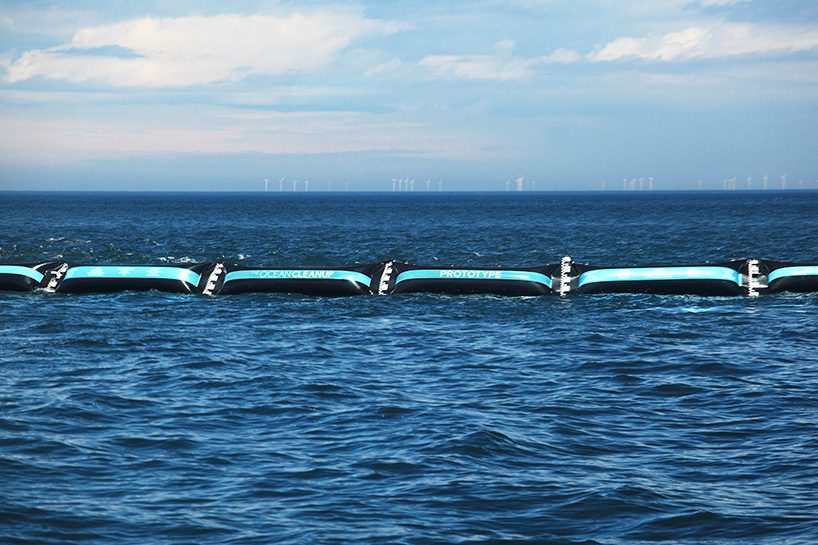
the design has advanced a lot since the 2016 prototype
image courtesy of the ocean cleanup
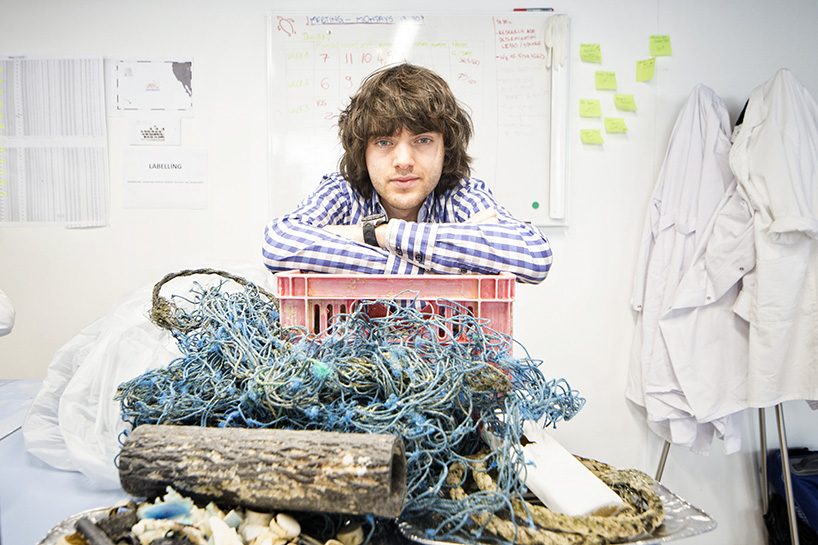
the ocean cleanup founder and CEO, 22 year old boyan slat
image courtesy of the ocean cleanup



